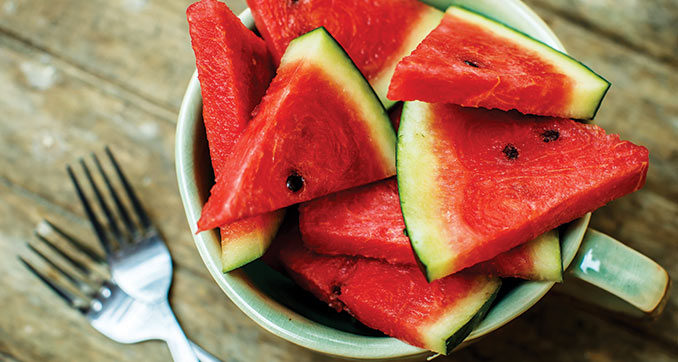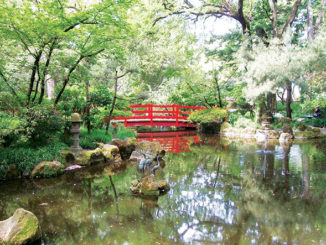
With summer’s return, the farmers markets are back up in abundance, offering fresh produce straight from the fields. And honestly? What could taste sweeter? Join us as we delve into the famous fruits of our valley, ripe and ready for the harvest! We promise you won’t be “blue”berry about such peachy choices! So, prepare to turn that sour-grape frown right around! We’ve got a watermelon of a whopper-story waiting for you.
Blueberry Bestie
Raise your hand if you know that the blueberry is, in fact, native to North America! For those who did, put your hand down, you look weird. And for those of you who didn’t, or were too shy to obey a magazine, the blueberry can be traced back to the colonial days and further still, where Native Americans would often use them in a variety of recipes that could last them throughout the winter. The wild blueberry was first domesticated in the early 1900s, and with its newfound ability to be harvested at ease, became a popular crop in states that experienced significantly cooler winters and warm summers.
Since then, the blueberry has become a new choice for planting in San Joaquin, enjoying a local growth spurt in the early 2000s. Chris Cotta, Product Manager at Rhythm & Blueberries, takes pride in offering organic blueberries, selling them at the Lodi Farmers Market. “Since we are organic and direct to consumer, we work with stricter guidelines regarding pest control and regulations,” Chris explains. As it were, people aren’t the only ones interested in taking a bite out of the blueberry market. “We have to deal with birds who love our blueberries, too. Our first crop, we had robins that had trouble flying away because they had gorged themselves!”
Now, nine years later, Chris is fairly certain they’ve smoothed out the kinks in their crops—birds included. “We work to provide an overall healthy ecosystem, one that is inviting to predators who feed on our pests. We have strong, on-site populations of insectivorous birds, birds of prey, and bats.” That’s good news for a company who can haul in as much as 3,000 pounds of blueberries per season. And since each blueberry is lovingly picked by hand, it means finding less pecks on fruit sold at market!
Table Grapes of Love
Although the grape can trace its roots as far back as the blueberry here in the States, it wasn’t until the 1700s that the grapes we know today were brought over by the Spanish to be raised for wine making in our Mediterranean climate. And it would take another hundred years, or so, for certain gold seekers to realize they could make their fortune in agriculture. Not long after, the table grape was first planted in Californian soil and bulk orders were shipped overseas.
Today, the market is filled with an incredible variety of grapes, wine-making in particular. But our hearts are set on that sweet, crisp bite of the table grape, and so are the folks at Smit Farms, who produce Flame and Crimson seedless, Summer and Autumn Royale, and the green seedless grape Melissa, otherwise known as the Princess. “[Table grapes] really love our soil,” explains Paul Smit, a Managing Member of Smit Farms. “We’re on the outer edge between Linden and Lodi, so it’s a sandy loam, with a little bit of clay.”
Even with the perfect soil, it takes patience and tenacity to grow such sublime crops. As harvest season kicks in, someone must always be on watch to ensure that each grape isn’t over-ripening on the vine. “You’ve got to be out there and you’ve got to know when to pick. Depending on the weather pattern, they could ripen very quickly,” Paul says. And an over-ripened grape is a soft grape, whose sugar levels have risen past its prime. “When they’re ready, we go out and cut them. They are not wine grapes; they can’t be harvested by machine.”
When they’re finally plucked, they’re sold nearest to their peak of flavor in local markets, unlike imported grapes. This allows customers to enjoy the grape as it was meant to be; sweet, crisp, and fresh.
Whatta Watermelon
It’s hard to imagine Lodi being anything other than the monumental appellation it stands as today. But when the city was first getting on its feet, agriculturally speaking, the watermelon was the great contender of the 1880s and 90s. With a water table only feet below ground, plants thrived in Lodi’s soil without heavy use of irrigation. Once the table dropped, Lodi lost its grandiose self-proclaimed title of “Watermelon Capital of the World”, and that honorary term headed south with many growers and to the edge of the county along townships like Manteca.
Today, watermelons still make a splash in our southern agricultural region, with local farming families like George Perry & Sons hauling in 3,700 to 4,000 melons per acre. And that’s just an average crop! “We have cool weather from the Carquinez Strait,” explains Art Perry of George Perry & Sons. “Because of that, the fruit actually gets more sugar in it, because the cooling of the evening. There’s something about the cool breezes in this area that makes for a really good watermelon. We’re in the perfect climate.”
The Perry family have continued their legacy of farming in Manteca since the 1920s, and still work the soil where the family first settled near Brunswick Rd. They’re well known for their seedless watermelon, and the mini seedless. For them, advances in irrigation have allowed them to work beyond fields rich in sandy loam, like clay loam, a much denser soil. But even with such advances, these finicky vegetables are still as labor-intensive as ever. “They have to be cut by hand,” says Art. “We use conveyers that we have hooked to tractors. The workers pick the melon up and set it on that conveyer.” These melons are put into containers and sent off to the shed for sizing. Once they’ve been sized, they’re sent off and to a variety of local supermarkets around the region.
Peachy Keen
Speaking of labors of love, the peach is that delectable fruit that requires a fine touch throughout the seasons. Its heritage dates back to ancient China, where smaller, much more sour variations grew wild. Once they were bred into the sweeter, plumper versions we know today, their popularity spread across the world and orchards blossomed up in Mediterranean climates. It’s only natural, then, that we see these beauties growing in California.
One such orchard belongs to the Lucchetti Family, owners of The Fruit Bowl. The youngest son followed in his parent’s footsteps to continue the family’s farming legacy, which began with, of all things, peaches! “I’ve been farming peaches all my life, I guess. This is our 70th year in business and a lot of our varieties are considered heirloom,” says Ralph Lucchetti. “[Peaches] like well-drained soil, preferably anything you’d plant any stone fruit in. We used flood irrigation before we switched to micro jets in the mid 80s.”
Ralph has kept a close eye on his many crops over the years, but the peaches needed a little more looking after this year, considering all the wet weather San Joaquin has had. “Because it’s a wet year, they’re more susceptible to [a number of diseases], especially things like peach curly leaf.” And wet year or not, the trees require a steady hand for pruning. “They naturally overbear, that’s why they’re pruned over-heavily,” Ralph explains. “You have to thin them to get a decent size.”
Every time harvest comes rolling around, the work is always worth the reward. Because Ralph and his wife, Denene, run The Fruit Bowl, customers can enjoy a fresh supply of peaches that have likely been plucked from the tree only hours ago. “We pick it while it’s fresh,” says Ralph. “And we try to sell it that day.”




